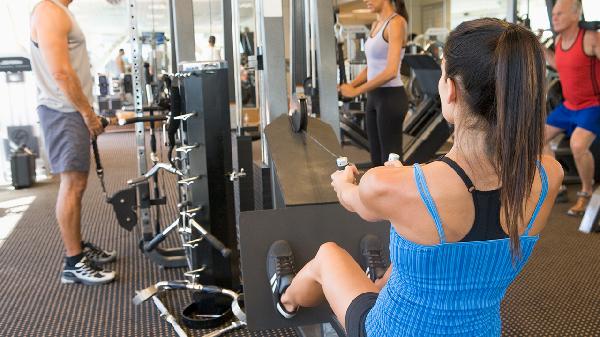The key to building a stronger core isn’t about endless crunches or torturous six-minute ab challenges—it’s about smart, intentional training with a mix of stability, strength, and power. And if you really want to level up, adding weight to your ab exercises can be a game-changer. Think of it like this: your abs are muscles just like your biceps or quads, and if you want them to grow stronger, you’ve got to challenge them beyond bodyweight moves. But don’t worry, you don’t need to go full Rocky Balboa with a medicine ball to see results. Even a light dumbbell or kettlebell can make a big difference when used correctly.
Why Weighted Ab Exercises Work
meaning you’ll not only look stronger but also move better in everyday life, whether you’re lifting groceries or nailing a heavy deadlift at the gym. The trick is to keep the weight manageable—no ego lifting here—so you can maintain perfect form and avoid turning your ab session into a back injury waiting to happen.
Weighted Russian Twists
This classic move targets your obliques like nothing else. Grab a dumbbell, kettlebell, or medicine ball (start light—5 to 10 pounds max), sit on the floor with your knees bent, and lean back slightly to engage your core. Hold the weight in front of your chest and twist side to side, tapping the weight to the floor each time. Keep your movements controlled—no wild swinging—and focus on using your abs to power the rotation, not momentum. If you feel this in your lower back, dial it back or skip the weight until your core gets stronger.
Weighted Cable Crunches
If you’ve got access to a cable machine, this is one of the most effective ways to load your abs without wrecking your spine. Kneel facing the cable, grab the rope attachment with both hands, and position it behind your head. Keeping your hips stationary, crunch forward by contracting your abs, then slowly return to the starting position. The cable provides constant tension, which means your muscles are working the entire time—no cheating with gravity here. Start with a light weight and focus on the mind-muscle connection; you should feel your abs burning, not your neck straining.
Dumbbell Side Bends
Simple but deadly effective for your obliques, this move is often done wrong. Hold a single dumbbell in one hand (again, keep it light—5 to 10 pounds), stand tall, and slowly bend sideways toward the weight, then return to center. The key? Don’t lean too far or let your torso twist—your movement should be controlled and limited to the side only. And for the love of gains, don’t use a heavy dumbbell and swing like a pendulum. That’s a one-way ticket to back pain city.
Weighted Hanging Leg Raises
Already a killer bodyweight move, adding weight takes hanging leg raises to the next level. Grab a pull-up bar and strap ankle weights (or hold a light dumbbell between your feet if you’re advanced). Keeping your legs straight, lift them up to at least 90 degrees, then lower them slowly. The goal isn’t to swing or use momentum—it’s to lift with your lower abs. If you can’t do this without swinging, ditch the weight and master the bodyweight version first. Trust me, your abs will still hate you either way.
Medicine Ball Slam Sit-Ups
This one’s for when you want to mix strength with a little explosive power. Lie on your back holding a medicine ball (start with 6 to 10 pounds), perform a sit-up, and at the top, slam the ball down as hard as you can next to your hips. Catch it on the rebound and control your descent back down. The slam adds an extra core challenge while letting you blow off some steam—just make sure you’re on a surface that can handle the impact (no slamming in your apartment at 2 AM, please).
Kettlebell Windmills
A sneaky-good move for core stability and shoulder mobility, windmills work your entire midsection. Hold a kettlebell overhead with one arm, feet slightly wider than hip-width, and toes turned out about 45 degrees. Keeping your eyes on the weight, hinge at the hips and lower your opposite hand toward the floor while keeping the kettlebell locked out overhead. Push through your heels to stand back up. This move requires serious core engagement to prevent your torso from collapsing, so start light and focus on form before adding weight.
Weighted Plank Variations
Planks are already a core staple, but adding weight turns them into a next-level endurance challenge. Try a weighted plank by placing a plate on your back (start with 10 pounds) or wearing a weighted vest. Keep your body in a straight line from head to heels, and brace your abs like you’re about to take a punch. If that’s too easy, try a weighted plank with shoulder taps or knee drives to increase the difficulty. Just don’t let the weight mess with your form—if your hips sag, it’s time to drop the weight.
How to Program Weighted Ab Exercises
You don’t need to do all of these in one workout—pick two or three and add them to your routine 2-3 times per week. Aim for 3 sets of 10-15 reps (or 30-60 seconds for isometric moves like planks). Since your core recovers quickly, you can train it more frequently than other muscle groups, but listen to your body—if you’re crazy sore, take a day off. And remember, weighted ab exercises are just one piece of the puzzle. Pair them with bodyweight moves, cardio, and full-body strength training for a well-rounded routine that keeps your core strong and functional.
At the end of the day, building a stronger core isn’t about chasing a six-pack (though that’s a nice bonus). It’s about creating a foundation that supports everything else you do, from lifting heavy to just moving through life without pain. So grab a light weight, focus on form, and give these moves a shot—your abs might curse you now, but they’ll thank you later.
























